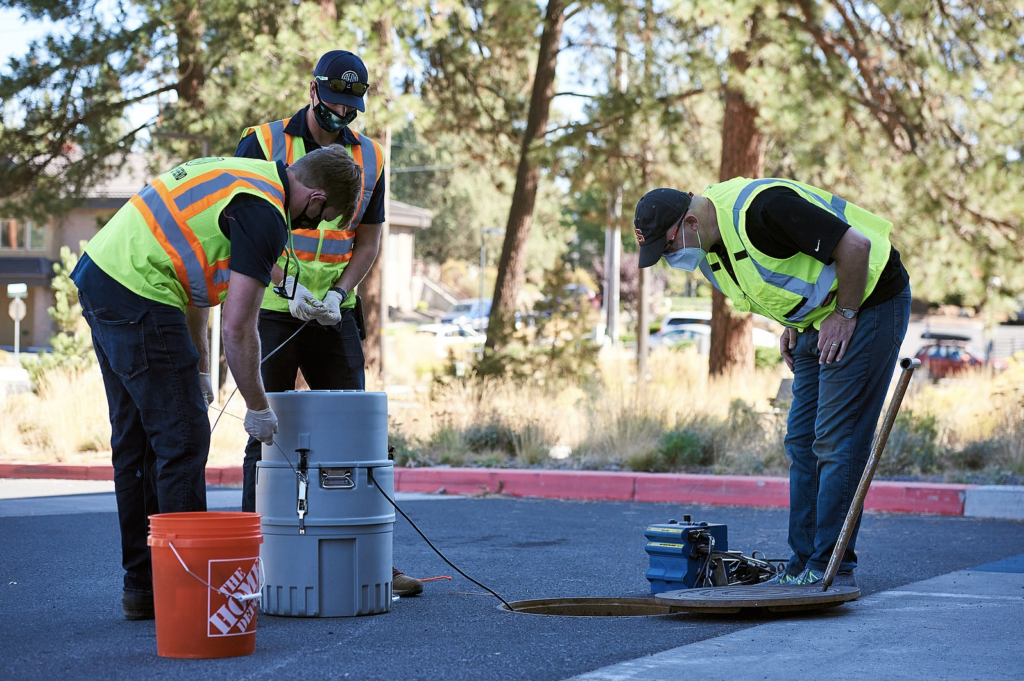Amherst Joins COVID Wastewater Surveillance Program

Photo: Joe Kline (Wikimedia Commons) (CC BY-SA 2.0)
Source: amherstma.gov
The Town of Amherst, partnering with the Massachusetts Department of Public Health (DPH) and Biobot Analytics, initiated COVID wastewater sampling on April 23, 2022. Supported by State funding, Amherst’s Department of Public Works (DPW) and Amherst Health Department are collaborating to present surveillance data that reflects trends in the population-wide COVID-19 burden (see below for the CDC description).
Amherst DPW collects 24-hour composite samples that is representative of all buildings, homes, and businesses that contribute wastewater to the Amherst Wastewater Treatment Plant, including Amherst College, Hampshire College and UMass Amherst. This sample collection is occurring three times each week. The lab measures the number copies of the virus per liter of sewage. The initial count is adjusted for dilution and other factors.
According to the CDC, People infected with SARS-CoV-2 can shed the virus in their feces, even if they don’t have symptoms. The virus can then be detected in wastewater, enabling wastewater surveillance to capture presence of SARS-CoV-2 shed by people with and without symptoms. This allows wastewater surveillance to serve as an early warning that COVID-19 is spreading in a community. Once health departments are aware, communities can act quickly to prevent the spread of COVID-19. Data from wastewater testing support public health mitigation strategies by providing additional crucial information about the prevalence of COVID-19 in a community.
Reports
To view the current or previous reports for Amherst’s Wastewater Surveillance Program, please click here. These reports are intended to provide a local, regional, state, and national perspective on the results from the wastewater surveillance in Amherst. New reports and updated program information can be found by visiting www.amherstcovid19.org/surveillance
How To Use COVID-19 Wastewater Data
Per the CDC, studying wastewater data can help scientists detect SARS-CoV-2, the virus that causes COVID-19, in a community even before data from doctor’s offices or hospitals get reported to public health officials. Wastewater data can be an important early warning signal and should be used alongside other data.
Wastewater surveillance data are most useful when used with other data. Wastewater data showing the percent change in virus levels should be used along with other data such as overall levels of the virus in wastewater, historical wastewater data for that location, geographical context (for example, whether areas have high tourism or neighboring communities with increasing cases), and clinical cases. Communities may see change in the virus wastewater levels as prevention strategies in their areas change.
Early warning systems, such as wastewater surveillance, can detect small changes as a signal for early action. It is important to note that when levels of virus in wastewater are low, a modest increase overall in the virus level can appear much larger as numbers are translated into percentages. For instance, a change from 1 unit to 2 units would be a percent change of 100%. A change from 500,000 units to 1 million units is also a percent change of 100%.
More data over time can give better, more reliable trends. Public health officials watch for sustained increasing levels of the virus in wastewater and use this data to inform public health decisions. State and local health officials track a variety of data and put this information together to understand the local COVID-19 situation and decide how to best respond.
